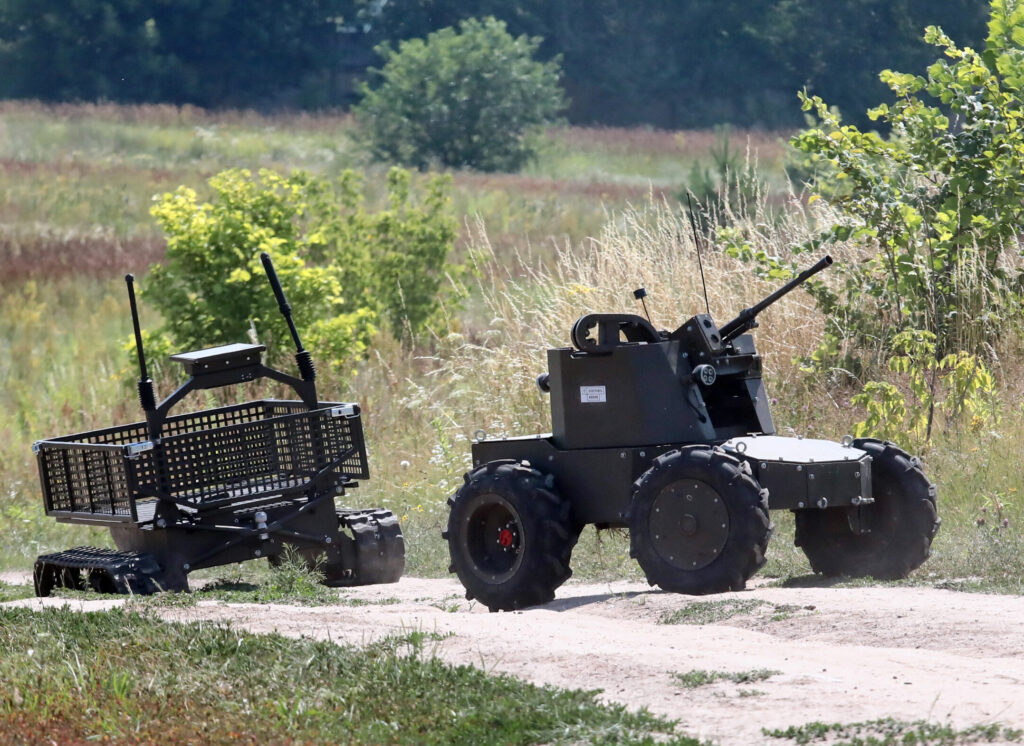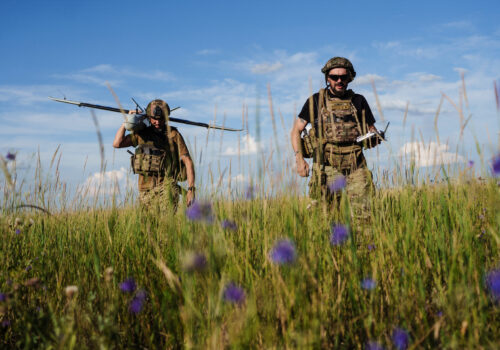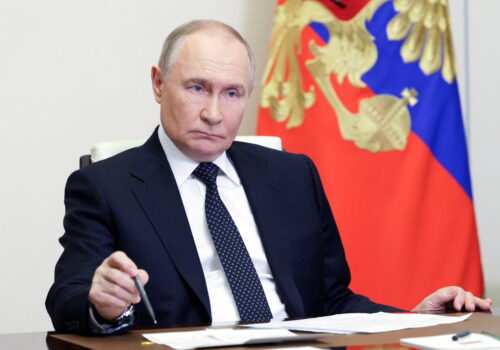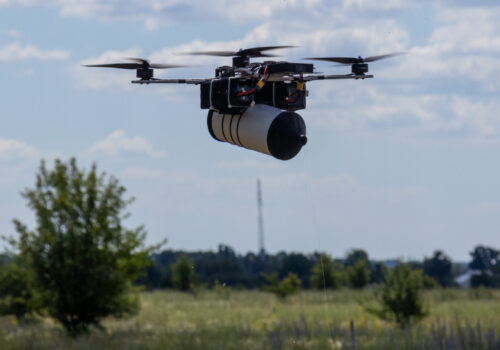The Ukrainian military claims to have conducted a groundbreaking local offensive in early July 2025, using exclusively robotic systems to seize a front line position in the Kharkiv region and capture a number of surrendering Russian soldiers. Officials from the Ukrainian army’s Third Assault Brigade stressed that the operation was unprecedented in modern warfare and emphasized that Ukraine had suffered no casualties.
Meanwhile, another Ukrainian front line unit has recently showcased a new robotic platform that is reportedly capable of shooting down Russian warplanes and helicopters. The system features a Soviet-era anti-aircraft missile launcher mounted on a remote-controlled robot, providing Ukrainian troops with enhanced defense against aerial attack while reducing their exposure to Russian drones.
These two developments underline the growing importance of robotic systems for the Ukrainian war effort. The Commander of Ukraine’s Unmanned Systems Forces, Major Robert Brovdi, has identified the deployment of robots as a top priority for the embattled nation. “Drones are currently creating a kill zone extending 20 kilometers from the front lines,” he stated in July. “The next challenge is to replace Ukrainian infantry with ground-based robotic systems that can take over all the logistical tasks in the front line area.”
Stay updated
As the world watches the Russian invasion of Ukraine unfold, UkraineAlert delivers the best Atlantic Council expert insight and analysis on Ukraine twice a week directly to your inbox.
The increased use of ground robots by the Ukrainian military reflects an emphasis on innovation that has enabled Ukraine to counter Russia’s often overwhelming advantages in terms of conventional firepower and manpower. For example, since the onset of Russia’s full-scale invasion more than three years ago, Ukraine has dramatically increased domestic drone production and earned a reputation as a global leader in drone warfare.
Similar trends are now evident in the development and deployment of Ukrainian robotic systems on the modern battlefield. Earlier this year, Ukrainian Ministry of Defense officials said the country intends to produce up to 15,000 ground robots by the end of 2025. If this target is reached, it would represent a massive expansion in the use of Unmanned Ground Vehicles or UGVs.
Robotic systems are in many ways an ideal solution for Ukraine as the country seeks ways to leverage its proven tech prowess in order to defend itself in a grueling war of attrition against a far larger enemy. With the Russian invasion now in its fourth year, mobilizing sufficient troops to maintain the war effort is becoming an increasingly acute problem for the Ukrainian authorities amid high casualty rates and an alarming rise in the number of desertions. This has led to questions over how much longer the Ukrainian military can hold the current front lines, and is believed to be fueling optimism in Moscow that a decisive breakthrough may soon be possible.
Eurasia Center events

While robots can never completely replace humans on the battlefield, there are a range of front line functions that robotic systems are suitable for. At present, Ukraine’s growing robot army is most commonly used in a logistical role to deliver supplies to troops in the trenches. With drones now a ubiquitous feature above the battlefield, any soldiers or vehicles moving around close to the front lines immediately become targets. Tracked or wheel-mounted robotic systems make it possible to resupply forces without risking casualties.
Crucially, robotic systems can be used to evacuate soldiers. Since 2022, the dominance of drones has made it more difficult to withdraw the wounded from the battlefield. This has led to increased Ukrainian losses, with injured troops often unable to receive medical attention in a timely fashion. While robotic transports are also vulnerable to drone attack and can face a range of other technical obstacles, the use of such platforms for emergency evacuations does increase the chances of survival.
Ukraine is also developing robotic systems capable of playing more direct defensive and offensive roles in the combat zone. While soldiers are still needed to guard trenches and consolidate any territorial gains, armed robots can potentially help maintain defensive positions and prevent Russian advances. This could reduce Ukraine’s reliance on dwindling manpower reserves and limit casualties.
Volunteers and private companies are playing an important part in efforts to develop new robotic models and integrate them into the Ukrainian military. They are faced with an array of practical challenges. In addition to securing the necessary funding and resources, it can also be difficult to provide training for military personnel who are desperately needed for combat duty.
While Ukraine’s senior military and political leadership are believed to appreciate the potential benefits of robotic systems, some field commanders reportedly remain reluctant to embrace new technologies. This legacy of the Soviet past has led to an uneven picture at different points along the line of contact, with many Ukrainian brigades able to invest time and money into developing and deploying robotic systems while others receive only limited access.
In order to fully capitalize on the promise of Ukraine’s robotic ground systems, more support must come from the Ukrainian government and the country’s international partners. Foreign investment is also needed to help Ukrainian developers boost output. Meanwhile, front line units must be given the resources and flexibility to train soldiers in the use of new unmanned systems, with commanders empowered to identify and prioritize the most effective robotic solutions.
Ukraine’s rapid wartime defense tech progress is driving the expansion of the country’s robot army. This is helping to address manpower shortages across the front and allowing the Ukrainian military to at least partially compensate for Russia’s greater resources and far larger population.
With the right investment and technical support, robotic systems could become a key element guaranteeing Ukraine’s national security and protecting the country against further Russian aggression. In order to reach that point, Kyiv and its partners must act quickly to scale up production and integrate new robotic technologies along the front lines of the war.
David Kirichenko is an associate research fellow at the Henry Jackson Society.
Further reading
The views expressed in UkraineAlert are solely those of the authors and do not necessarily reflect the views of the Atlantic Council, its staff, or its supporters.

The Eurasia Center’s mission is to enhance transatlantic cooperation in promoting stability, democratic values, and prosperity in Eurasia, from Eastern Europe and Turkey in the West to the Caucasus, Russia, and Central Asia in the East.
Follow us on social media
and support our work
Image: A ground robotic system equipped with a machine gun are displayed during a meeting for the press to demonstrate all the main types of ground robotic systems used by Ukraine on the front line, Ukraine, on July 10, 2025. (Photo by Volodymyr Tarasov/Ukrinform) (Photo by Ukrinform/Ukrinform/Sipa USA)





